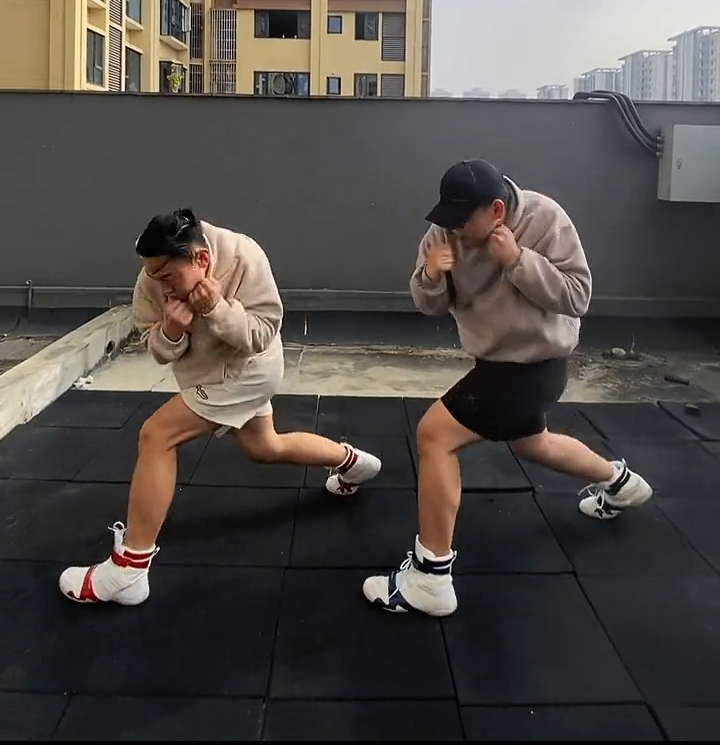Origins and Philosophy
Wing Chun is a traditional Chinese martial art that originated in the southern regions of China. Legend has it that the art was developed by a Buddhist nun named Ng Mui , who observed the movements of a crane and a snake. Wing Chun emphasizes practicality, efficiency, and quick reflexes, making it ideal for self-defense in real-world situations. Its philosophy revolves around using minimal force to neutralize an opponent, often targeting vulnerable points such as the eyes, throat, and joints. Wing Chun is also deeply rooted in the concept of "centerline control," where the practitioner aims to dominate the central line of their opponent to gain a tactical advantage.
Boxing
Boxing, often referred to as "The Sweet Science," is a martial art with roots in ancient civilizations, including Egypt, Greece, and Rome. Modern Boxing, as we know it today, evolved in England during the 18th and 19th centuries. Boxing is a striking art that focuses on punches delivered with the fists. Its philosophy is straightforward: outstrike, outmaneuver, and overpower the opponent. Boxing emphasizes footwork, head movement, and the ability to read an opponent's movements, making it a highly strategic and dynamic martial art.

Key Techniques and Fighting Styles
Wing Chun
Wing Chun is a close-range martial art that relies on quick, precise movements and efficient energy use. Its techniques are designed to neutralize an opponent with minimal effort. Some of the signature techniques include:
Palm Strikes and Hand Techniques : Wing Chun uses a variety of palm strikes, punches, and open-hand techniques to target vulnerable areas.
Joint Locks and Grappling : Wing Chun incorporates Chin Na (joint locking) and grappling techniques to control or incapacitate an opponent.
Footwork and Body Alignment : Wing Chun emphasizes maintaining balance and control through precise footwork and body positioning.
Dim Mak : Pressure point strikes are a key aspect of Wing Chun, allowing practitioners to incapacitate opponents with precise strikes.
Wing Chun also places a strong emphasis on simultaneous defense and offense, ensuring that every movement has a purpose.
Boxing
Boxing is a long-range and medium-range striking art that focuses on punches delivered with speed, power, and precision. The core techniques in Boxing include:
Jab : A straight punch delivered with the lead hand, often used for probing and setting up other strikes.
Cross : A powerful punch thrown with the rear hand, targeting the opponent's head or body.
Hook : A curved punch aimed at the sides of the head or body.
Uppercut : A punch delivered in an upward motion, typically targeting the opponent's chin.
Footwork : Boxing relies heavily on footwork to maintain distance, create angles, and avoid punches.
Boxing also emphasizes defensive techniques such as slipping, blocking, and head movement to evade incoming strikes.

Self-Defense vs. Sport Fighting
Wing Chun
Wing Chun is primarily designed for self-defense. Its techniques are practical and efficient, focusing on neutralizing threats quickly. Wing Chun practitioners are trained to assess threats and respond with precision, making it an excellent choice for real-world self-defense scenarios. The art's emphasis on close-range combat and pressure point strikes makes it highly effective for situations where the practitioner is in immediate danger.
Boxing
While Boxing is also effective for self-defense, it has evolved into a popular sport. Boxing matches are governed by strict rules, and the goal is to outscore the opponent or knock them out. Boxing's focus on striking and footwork makes it a great sport for developing physical fitness, discipline, and mental toughness. However, its techniques may not always translate directly to real-world self-defense, as Boxing often involves prolonged exchanges and assumes a certain level of control over the situation.

Training and Fitness
Wing Chun
Wing Chun training emphasizes precision, timing, and control. Practitioners often practice forms (solo exercises) and partner drills to refine their techniques. While it does improve overall fitness, the focus is more on mental discipline and technical mastery than on physical endurance. Wing Chun training also incorporates the use of training tools like the Wing Chun dummy and stick sets to enhance muscle memory and coordination.
Boxing
Boxing training is physically demanding and focuses on building strength, stamina, and cardiovascular fitness. Fighters engage in rigorous pad work, heavy bag training, and sparring to develop their striking power and endurance. Boxing training is known for being intense and sweat-inducing, making it an excellent choice for those looking to build overall fitness and improve their reflexes.

Cultural Significance
Wing Chun
Wing Chun holds deep cultural significance in Chinese martial arts. It is often associated with the legendary figure of Bruce Lee , who was heavily influenced by Wing Chun and incorporated its principles into his Jeet Kune Do philosophy. Wing Chun's emphasis on efficiency and practicality has made it popular worldwide, with training centers in many countries.
Boxing
Boxing is a global sport with a rich cultural history. It has been a staple of martial arts competitions for centuries and has inspired countless athletes and fans around the world. Boxing is not just a martial art but also a symbol of resilience, discipline, and determination.
Which One Should You Choose?
Choosing between Wing Chun and Boxing ultimately depends on your goals and preferences. If you are interested in a martial art that emphasizes practical self-defense, mental discipline, and efficient techniques, Wing Chun might be the better choice for you. On the other hand, if you are looking for a physically demanding sport that focuses on striking and full-body combat, Boxing could be more appealing.
Both martial arts offer unique benefits and challenges, and many practitioners even combine elements of both to create a well-rounded skill set. Regardless of which path you choose, dedication and consistent training are key to mastering any martial art.
Conclusion
Wing Chun and Boxing are two of the most respected and widely practiced martial arts in the world. While they differ in their techniques, philosophies, and applications, both offer invaluable lessons in self-defense, discipline, and personal growth. Whether you are drawn to the precision and efficiency of Wing Chun or the raw power and intensity of Boxing, each martial art has its own unique魅力 that can inspire and transform you.
If you are considering learning a martial art, take the time to research both disciplines and see which one resonates with you. Remember, the best martial art is the one that aligns with your goals and keeps you motivated to train consistently. Good luck on your martial arts journey!





